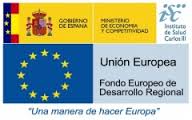The RACECAT trial aims to evaluate if direct transfer to an Endovascular Stroke Center, compared to transfer to the closest Local Stroke Center, offers a better outcome in the distribution of the modified Rankin Scale scores at 90 days in acute ischemic stroke patients with clinically suspected Large Vessel Occlusion identified by Emergency Medical Services (EMS).
The RACECAT study is a prospective, multicenter study, carried out in the entire territory of Catalonia, randomized by groups (cluster), with blind evaluation of the main result, which includes identified patients with acute stroke and suspected large vessel occlusion (LVO). by the Emergency Medical Service using the RACE scale. A RACE score of 5 or more (high suspicion of OGV) is the main inclusion criterion. Two strategies are compared: 1) Transfer to the nearest local center (drip-and-ship) vs. 2) Direct transfer to the endovascular center (mother ship).
A total of 1401 patients were included. The study demonstrated that in non-urban areas, direct transfer to an endovascular center allowed a higher rate of thrombectomy treatment and shorter time to treatment. However, it failed to demonstrate differences in clinical recovery at 3 months compared to transfer to the nearby stroke center. These results should be interpreted taking into account that the study demonstrated a highly coordinated model for the transfer of patients between hospitals in the drip-and-ship model.
For more details, you can consult the publication of the study in the JAMA journal.




